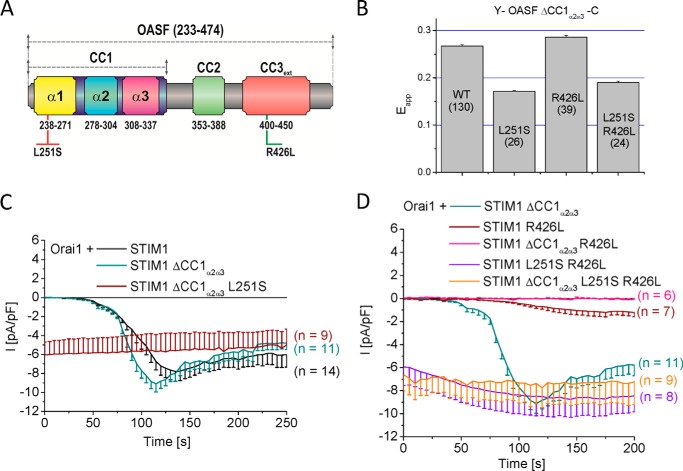FIGURE 6.
The CC1α1 domain is sufficient for controlling STIM1 conformational transition from a quiescent to an activated state. A, schematic diagram of human STIM1 OASF with highlighted point mutations that either weaken (red L251S) or enhance (green R426L) coiled-coil stability. B, block diagram summarizing FRET values (Eapp) of double-labeled Y-OASF ΔCC1α2α3-C (WT) as well as inserted point mutations (single L251S, single R426L, double L251S R426L). C, time courses of inward currents from whole-cell patch-clamp experiments co-expressing Orai1 with full-length STIM1 or STIM1 ΔCC1α2α3 or with the point mutation L251S introduced into STIM1 ΔCC1α2α3 that resulted in constitutively active inward currents. D, R426L mutation introduced either in wild type STIM1 or STIM1 ΔCC1α2α3 yielded highly attenuated inward Ca2+ currents when co-expressed with Orai1, while the additional point mutation L251S restored inward currents to similar levels in full length as well as STIM1 ΔCC1α2α3 L251S R426L mutants.

